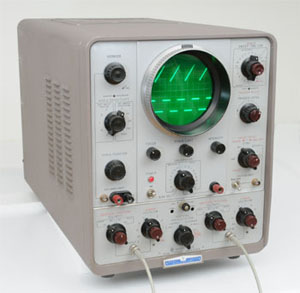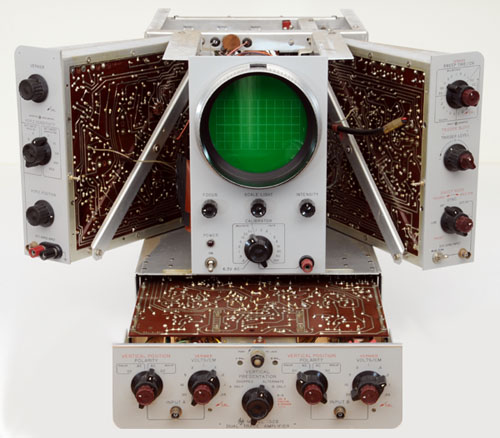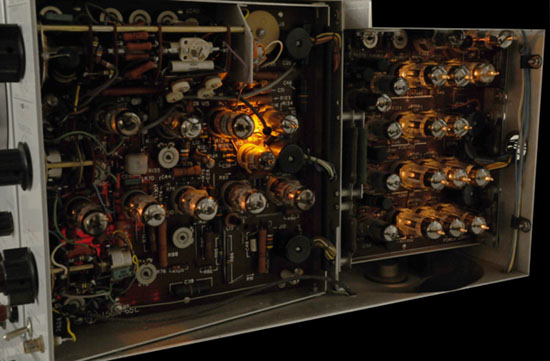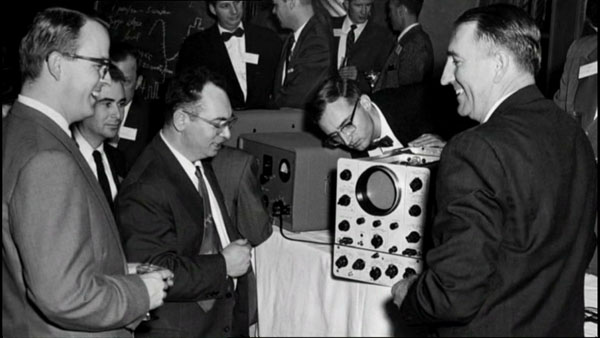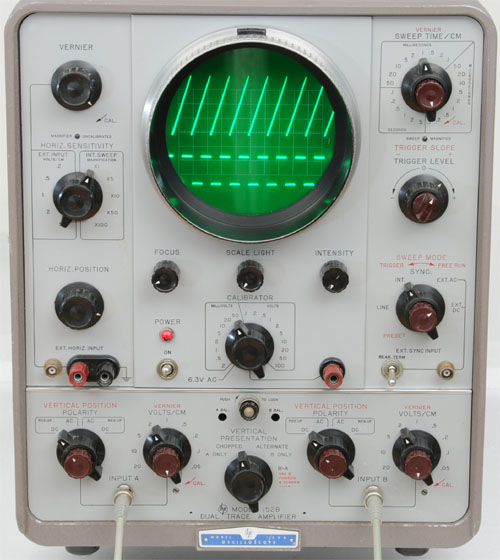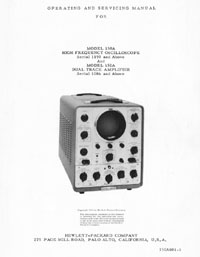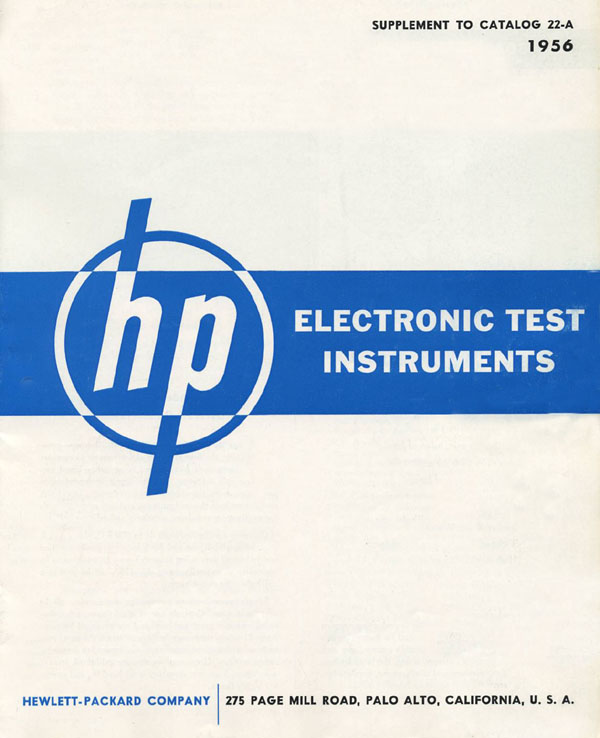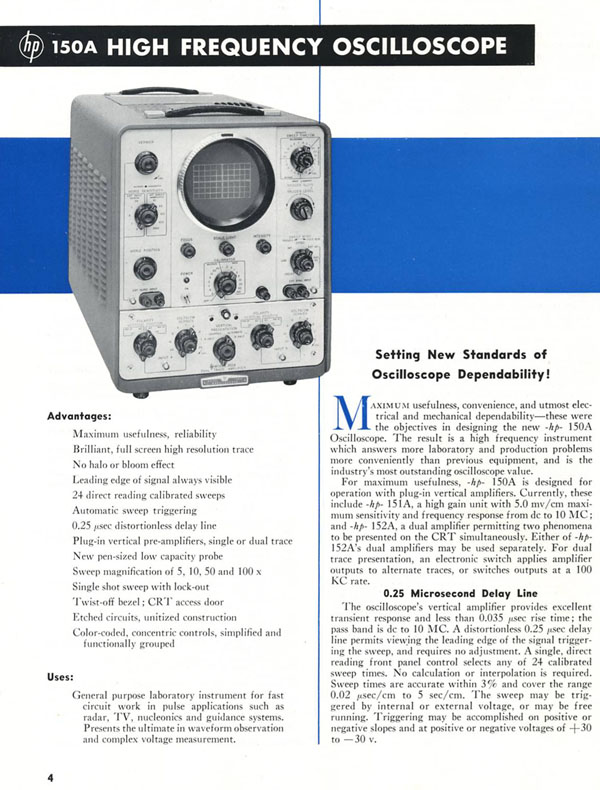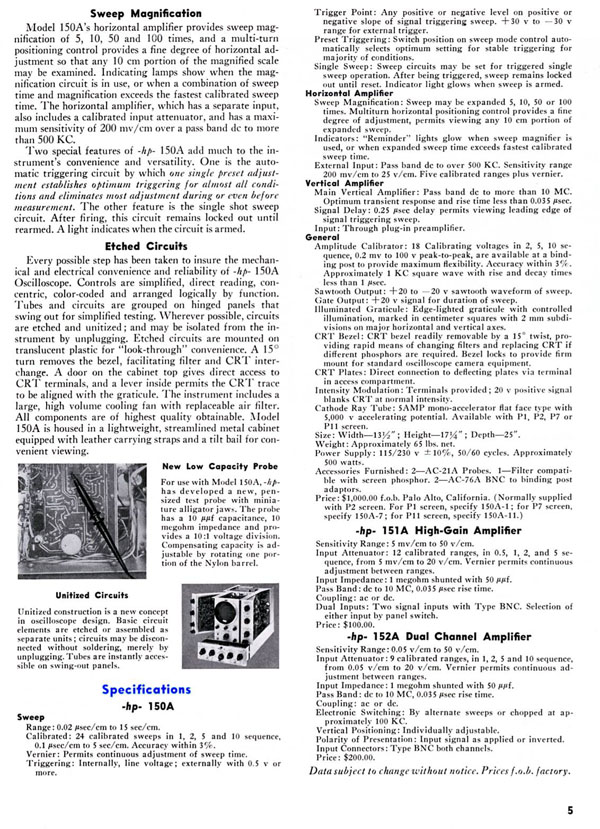After a 5 year search on Ebay, we finally found a HP 150A oscilloscope for sale.
It was the last missing Model, and completes our collection of HP oscilloscopes with
at least one item in each category of product lines, from the birth of the company
up to year 2000. You can now, on this web site, get an overview of the whole production
of HP oscilloscopes from 1939 to 1960, from 1960 to 1980, and from 1980 to 2000.
The HP 150A Oscilloscope,
A Vintage Symbol of the HP Entry into the Oscilloscope Business
The beginning of oscilloscope production at HP was marked a change in the overall company philosophy.
In 1955, sixteen years after the company's birth, the Hewlett-Packard catalog listed nearly 250 measuring instruments of every type except one -- the oscilloscope!
At the time, Tektronix oscilloscopes were top of the line and the Tektronix Company had built an enviable reputation for superb quality and reliability. The focus at HP was on the dramatic opportunities in the communications business and Bill and Dave's philosophy was not to build a "me-too" product, however they finally approved a modest oscilloscope development program at HP.
The first two products were the HP 130A and 150A. The 130A was a slick DC to 300 kcs low-frequency scope that filled a niche that Tektronix didn't occupy and the 150A was a 10 Mcs, dual channel plug-in design, which at that time was deemed general purpose.
Made for Accessibility, and . . . Serviceability
The HP150A had a high number of convenient mechanical features. One of these was the physical layout of the instrument. As shown below, on the unit of the HP Memory collection, the instrument is constructed so that sub-assemblies are mounted on swing-out panels. Such an arrangement gives a high order of accessibility to components and wiring.
The Very Beginning of Etched Circuit Techniques (PCBs)
The HP 150A electronic circuitry is made of 52 vacuum tubes. Circuits are constructed in sub-assembly form and all of these sub-assemblies are interconnected with plug-in type wiring. Most sub-assemblies are constructed using etched circuit techniques.
The cathode-ray tube used in the Model 150A is a type 5AMP. This tube was one of the modern monoaccelerator designs which was especially suited to measurement work because of their reduced distortion. Due to the quantity of vacuum tubes, the instrument is fan cooled with filtered air so that components are operated at low temperatures. A thermal cut-out supplements the cooling system to guard against accidental air stoppage.
It is not enough to be just as good . . .
Unfortunately, the HP 150A was not exactly HP's most shining star. In his book: "BILL & DAVE " edited in 2007, Michael S. Malone gives a short and clear explanation of the failure of the HP introduction in the oscilloscope business:
". . . In 1954 Bill & Dave initiated a new product development program in scopes. Development took two years, and in 1956, HP introduced its first two oscilloscopes as the opening salvo in what would become a forty-year battle with Tektronix. One of these scopes, the model 130A, was a beautiful low-frequency oscilloscope perfectly targeted at a niche where Tek had no competitive offering. But the main weapon in HP's attack was the model 150A, a 10 MHz model targeted at the very heart of Tektronix's business. It offered a few real innovations, like a better display, but most of its differences from its Tek counterparts were obvious (and not very compelling) attempts just to be different.
But worse, the model 150A was a dog. It suffered terrible reliability problems, and HP wasn't prepared to deal with overwhelming demand by furious customers for immediate service. Hewlett recalled, "We came out with this fancy scope and the thing was just incredibly unreliable... we had to replace all of those scopes." . . .
" . . . To challenge an industry standard, it is not enough to be just as good - you have to be MUCH better. And the HP 150A wasn't even close. Existing Tektronix users found no reason to switch and new users were quickly warned to stick with the proven brand..."
Not Reliable ! . . .?
Due to the various problems explained above, the Model 150 Oscilloscopes did not have a very long production life at Hewlett Packard. Introduced in 1956, it disappeared from the catalog in 1962. I don't know where this particular unit spent its life, nor in which condition it was used, but one thing is for sure, today in 2010 it is at least fifty years old. It was bought from an American Ebay seller who reside in Seattle WA. It crossed the Atlantic in 2009, thanks to UPS, to finally improve our collection with a major and very symbolic vintage showpiece . . .
. . . Which was Still Working at First Power-On !





